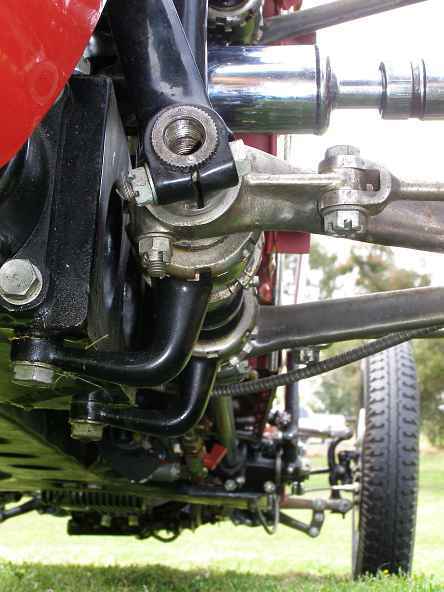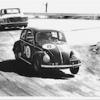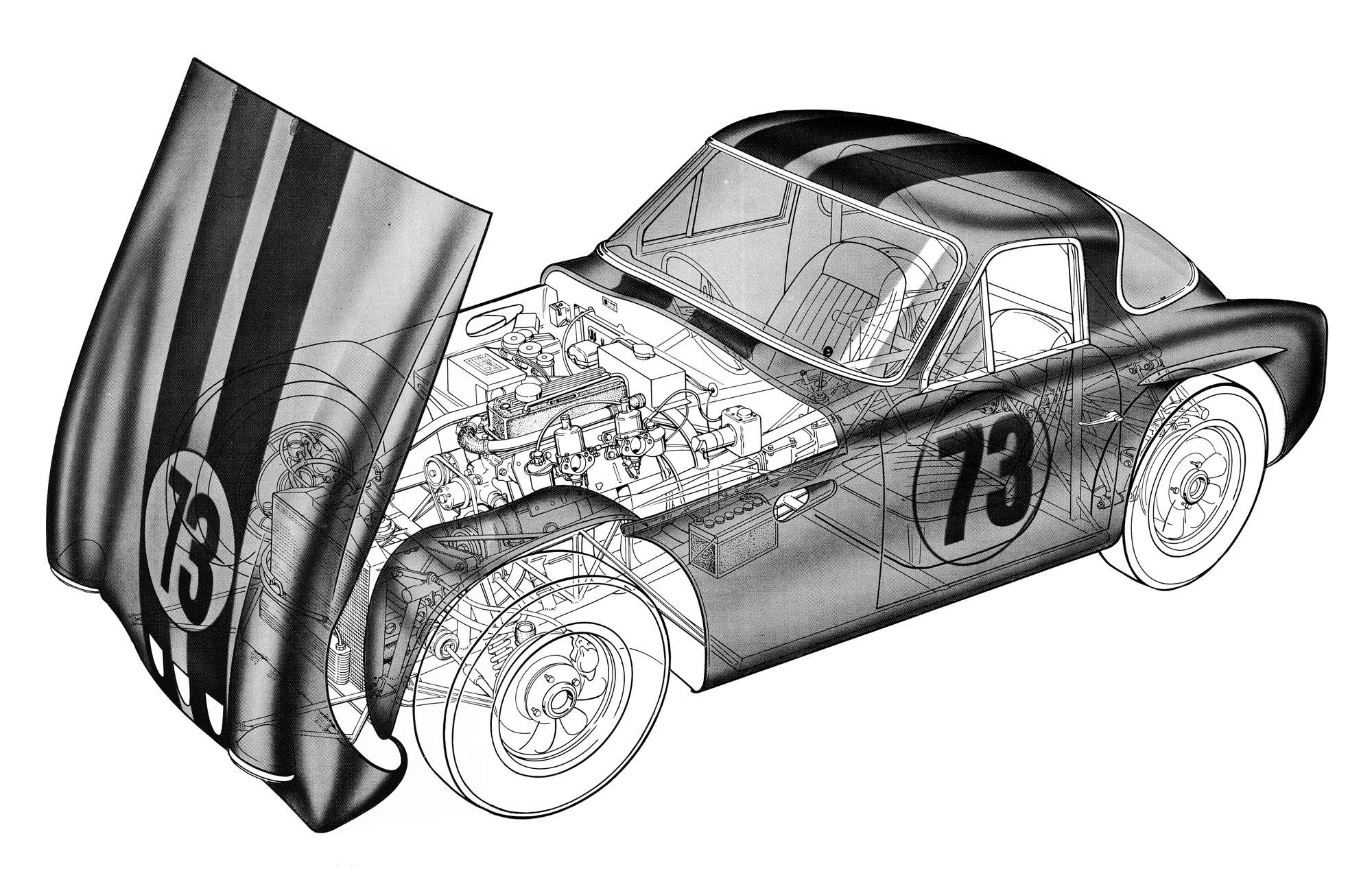
Steel backbone chassis - who was first, Renault or Lotus?
#1

Posted 18 January 2012 - 13:56
More recently I have found out that the Alpine Renault A110 also featured a steel back bone chassis and fiber glass body, curiously the writer of the article linked seems to think that Chapmans thinking was a 'major source of inspiration behind the design that had been influenced by the Lotus Elan'. No problem there except SFAIK production of the Alpine Renault A110 got under way in 1961 !
Can anyone confirm that it was the A110 that lead the way with the steel back bone chassis with fiber glass body combination ?
Finally does anyone know how the A108 was constructed ?
I've seen mention of the A110 being and 'evolution' of the A108 which suggests a similar construction method.
Relevant answers may be credited and used in forthcoming blogs.
Thanking you in anticipation of your responses.
Advertisement
#2

Posted 18 January 2012 - 14:25
The Skodas, as far as I know, had their backbone chassis from the forties. I have a notion that the clumsy-looking Tatra was also built the same way. Again, no fibreglass.
But the Clisby comes closer, I guess. If fibreglass had been around when it was built, it might well have been clothed in some thin remnants of it.
This car, a hillclimb special, used a Douglas motorcycle flat twin up front and drove through a piece of pipe to a differential at the rear. The independent front and rear suspension hung off either the pipe or the diff or the engine. So did the driver.
Then came the larger-scale copy of the Clisby, Eldred Norman's Eclipse Zephyr. There are photos hereabouts of the car, which used its Ford Zephyr 6 engine and a larger piece of pipe, not to mention a Tempo Matador transaxle, as its backbone. Everything else hung off these pieces, while a lightweight aluminium body wrapped around it all.
Again, no figreglass.
When did TVR start making their backbone-chassised fibreglass-bodied cars?
#3

Posted 18 January 2012 - 14:54
#4

Posted 18 January 2012 - 14:56
#7

Posted 18 January 2012 - 15:25
http://forums.autosp...dustrial museum
ISTR hat Karl Ludvigsen covers some of this topic in his recent Chapman tome. i will check it.
Roger Lund
#8

Posted 18 January 2012 - 15:55
#9

Posted 18 January 2012 - 16:07
elansprint72, on Jan 18 2012, 16:23, said:
I was responding to the question posed in the title of the thread.
Yeah, bit of a cheap shot, sorry.
From memory, and it was a long time ago I worked on one, but the Rover was probably a bit more advanced, as the backbone/chassis was also the gearbox/transmission/diff' housing as well, with the axle housings bolted to it???
#10

Posted 18 January 2012 - 16:18
f1steveuk, on Jan 18 2012, 16:07, said:
Yeah, bit of a cheap shot, sorry.
From memory, and it was a long time ago I worked on one, but the Rover was probably a bit more advanced, as the backbone/chassis was also the gearbox/transmission/diff' housing as well, with the axle housings bolted to it???
I'm inclined to think that the fore-mentioned Tatra was the first car which really went into production with a backbone but I have a nagging doubt that something else in the UK popped up in the thirties.
#11

Posted 18 January 2012 - 16:27
#12

Posted 18 January 2012 - 16:34
The Tatras look like they were based on a similar philosophy.
The tube itself is of relatively measely diameter - how much does it contribute to torsional rigidity?
#13

Posted 18 January 2012 - 17:08
Badly explained by me ? Maybe - so please look at drawings/photographs to see what I am waffling about ....
AAGR
#14

Posted 18 January 2012 - 17:46
Thanks to every one who has thrown in their 10¢ worth, I am getting the picture there are many variations to the back bone concept and now have a potted time line :-
Rover 1903
Tatra 1923
Skoda 1933
Clisby 1952 (?)
Alpine Renault 108 1959
Alpine Renault 110 1961 with fibreglass body
Lotus Elan 1962 with fibreglass body
Tartra and Alpine Renaults backbone did not contribute the same sort of rigidity as the others
TVR used multi tube back bone with outriggers since ?
#15

Posted 18 January 2012 - 18:06
Presumably Artidesco wants the names of production cars not one offs?
#16

Posted 18 January 2012 - 18:12
David Birchall, on Jan 18 2012, 18:06, said:
The Triumph Herald/Spitfire used a backbone chassis-sure they had outriggers to support the floor but it was still a backbone chassis.
Presumably Artidesco wants the names of production cars not one offs?
Completely forgotten about the Triumphs David
I was actually only looking to establish if Alpine Renault used the idea before Lotus David, not anticipating things would be far complicated than a yes / no answer
#17

Posted 18 January 2012 - 18:29
David Birchall, on Jan 18 2012, 18:06, said:
The Triumph Herald/Spitfire used a backbone chassis-sure they had outriggers to support the floor but it was still a backbone chassis.
Presumably Artidesco wants the names of production cars not one offs?
The Triumph Herald/ Spitfire chassis had a backbone or even supported anything? It could hardly support itself.
#18

Posted 18 January 2012 - 18:30
willga, on Jan 19 2012, 00:34, said:
The tube itself is of relatively measely diameter - how much does it contribute to torsional rigidity?
About 125mm/5" looking at it, surprisingly strong without a doubt - A110 chassis in front and no it does not belong to the A310 shell behind it...

and floorpan ..

From Alpine Affairs rebuild of an A110 here ..
http://www.alpineaff...e/PHILSA110.htm
Edited by cheapracer, 18 January 2012 - 18:32.
Advertisement
#20

Posted 18 January 2012 - 19:53
#21

Posted 18 January 2012 - 20:44
arttidesco, on Jan 18 2012, 17:46, said:
Tartra and Alpine Renaults backbone did not contribute the same sort of rigidity as the others
Whatever rigidity the Alpine has comes only from the backbone. The body is extremely light, and on the works cars it barely keeps the daylight out. They were rigid enough to win the occasional rally, were they not?
And perhaps the thread title could be changed to 'Alpine or Lotus'?
#23

Posted 18 January 2012 - 21:42
elansprint72, on Jan 18 2012, 16:18, said:
;)
I'm inclined to think that the fore-mentioned Tatra was the first car which really went into production with a backbone but I have a nagging doubt that something else in the UK popped up in the thirties.
MG R-Type. I knew there was something from these shores.
#24

Posted 18 January 2012 - 21:56
And what on earth is the TVR chassis other than a backbone? All of them have outriggers stretching out from the central backbone!
#25

Posted 18 January 2012 - 23:43
h4887, on Jan 18 2012, 20:44, said:
Whatever rigidity the Alpine has comes only from the backbone. The body is extremely light, and on the works cars it barely keeps the daylight out. They were rigid enough to win the occasional rally, were they not?
And perhaps the thread title could be changed to 'Alpine or Lotus'?
Yes sorry for the Alpine Omission no offence intended
#26

Posted 19 January 2012 - 02:10

#29

Posted 19 January 2012 - 03:19
David Birchall, on Jan 19 2012, 03:50, said:
An early beetle is a steel backbone. The floor is an out rigger, cut it away and the chassis still rolls.That is why so many 'specials' have been based on the VW floor pan because you take off the bug body and bolt on all sorts of exotica. But is still sounds like a VW!!Come on! Seriously!! A backbone chassis in a VW Bug? Nah, I don't think so...
Really there was several versions of backbone cars made ever before Lotus. But those and the Renault were the first ;midengined' cars I feel.
Though I am sure Ray will come back with others!
#30

Posted 19 January 2012 - 03:51
#31

Posted 19 January 2012 - 04:25
David Birchall, on Jan 19 2012, 14:51, said:
Without the floor, there is quite a lot.....the chassis. The floor is made of two 0.8mm 'halves', R/H & L/H, and have virtually no structural function, other than preventing the occupants from touching the road.Cut a VW "floor pan" down to a backbone and you would have somewhere to mount the handbrake lever and not much else! Without the floor there is not much!
#32

Posted 19 January 2012 - 05:31
GMACKIE, on Jan 19 2012, 04:25, said:
Tatra were demanding compensation for copyright infringments from Ferdinand Porsche,who told Hitler he was going to agree to pay them out and get the beetle into production.Without the floor, there is quite a lot.....the chassis. The floor is made of two 0.8mm 'halves', R/H & L/H, and have virtually no structural function, other than preventing the occupants from touching the road.
Hitler said don't worry about it I am solving the problem...it was 1938 and he invaded Czechoslovakia...problem solved.The tatra had a flat chassis with structural tunnel like a beetle,
flat 4 boxer engine with air cooling of oil and engine.
Still no fiberglass though...
#33

Posted 19 January 2012 - 05:54
#34

Posted 19 January 2012 - 06:04
werks prototype, on Jul 1 2010, 22:25, said:
TWest, on May 12 2010, 20:40, said:
Another William Moore effort, , the TVR sports car. These were really nasty little street cars at the time, although the capability of doing a wheelstand probably doesn't fit in with the sports car image, and that thing would, in fact, do a pretty fair wheelstand on the street.
Tom West
Uploaded with ImageShack.us
#35

Posted 19 January 2012 - 07:04
http://en.wikipedia....ebruar_1933.jpg
#36

Posted 19 January 2012 - 08:34
312f1, on Jan 19 2012, 08:04, said:
That's right.But in the end,monocoque was better.Opel,Citroen and Vauxhall already had this before WW2. If the Beetle body was welded onto theThere was also Ing. Franz Ganz, contemporary of Porsche and Ledvinka, who championed the idea of a backboned chassis peoples car.
http://en.wikipedia....ebruar_1933.jpg
floorplan instead of bolted ,it would hove been a monocoque .
#38

Posted 19 January 2012 - 08:51
Catalina Park, on Jan 19 2012, 05:54, said:
The Lotus is a folded sheet metal chassis ....
I suspect this might be the difference that I seem to have forgotten over time which lead me to starting the thread and differentiates the Lotus from the Alpine in particular.
Thanks for giving me so much food for thought Gentlemen
#39

Posted 19 January 2012 - 09:12
Roger Lund
Advertisement
#40

Posted 19 January 2012 - 10:47
The sports car that Sacha Gordine never completed was to have a huge tubular backbone frame, much like some of De Tomaso's later designs.
Interestingly Morgan deserves credit for the early backbone frame of its three-wheelers. In fact after the abortive Rover of 1904 Morgan was the first in the world to use a backbone frame in production, starting in 1910. Pretty good going!
#41

Posted 19 January 2012 - 12:35
GMACKIE, on Jan 19 2012, 05:25, said:
The floor has no real strength without the body really. BUT the backbone does, it can be driven safely [sort of] without a body. A lot were as buggies with little other structure. And I doubt that you could do that with a Lotus. Though it would be quicker if you could!Without the floor, there is quite a lot.....the chassis. The floor is made of two 0.8mm 'halves', R/H & L/H, and have virtually no structural function, other than preventing the occupants from touching the road.
#42

Posted 19 January 2012 - 12:49
Not forgetting that there's some strength in the lip around the outside.
#43

Posted 19 January 2012 - 13:22
The VW chassis is usually referred to as a 'platform' type...
Not forgetting that there's some strength in the lip around the outside.
[/quo
Not much, the flex quite well when you stand on them. They would be quite stiff when bolted to the VW body.
But I have seen those floors with a simple roll bar and a mount for the steering column driven quite hard in the sandhills,, and survive.
The one I had about 35 years ago was a shortened floor pan with a decent cage built on it. That was used for about 10 years before, during and after my ownership as a weekend toy. I have pictures somewhere of it about 6 feet in the air. With a stock 40 horse engine!
#45

Posted 20 January 2012 - 11:14
You have a good point there, I agree. But the general understanding is that there is a difference.
#46

Posted 21 January 2012 - 05:19
Ray Bell, on Jan 20 2012, 22:14, said:
I have played around with VWs and there is not much strength in the floors at all. The backbone does not get any strength from the floors. The suspension loads are taken through the backbone and not the floors.But would it still be as strong?
You have a good point there, I agree. But the general understanding is that there is a difference.
You can remove and replace the floors without hurting the structure.
#47

Posted 21 January 2012 - 14:57
Backbone chassis is a subject I might well come back to at some point in the future :-)
Edited by arttidesco, 21 January 2012 - 14:58.
#48

Posted 21 January 2012 - 17:40
arttidesco, on Jan 21 2012, 14:57, said:
Thanks to Ray Bell, Pete Taylor, Tim Murray, Steve Holter, Roger Lund, David McKinney, willga, AAGR, David Birchall, JtP1, cheapracer, Greg Mackie, Geoff Butcher, Lee Nicole, johnny yuma, Catlina Park, 312f1, and Karl Ludwigsen for your help with identifying some pre Elan models with back bone chassis for today's 26R Blog

Backbone chassis is a subject I might well come back to at some point in the future :-)
Thank you, but I don't remember pointing out what had a backbone chassis. Only what didn't . In fact, I wouldn't call what passes for a Herald chassis a chassis, more a collection of bent metal loosely assembled.
#49

Posted 21 January 2012 - 17:46
#50

Posted 21 January 2012 - 18:08
David Birchall, on Jan 21 2012, 17:46, said:
I disagree! I am surprised to find myself defending the Herald/Spitfire chassis but having recently worked on one--I chopped it up--I found that I was quite impressed. Better made than the Lotus although not as light. It has the usual mud/corrosion traps that all older cars suffer from. It is unquestionably a "backbone chassis" unlike the VW Beetle, Morris Minor or other bowls of porridge.
And the Spitfire even more so, since that did without the (relatively) substantial outrigger assemblies...


























